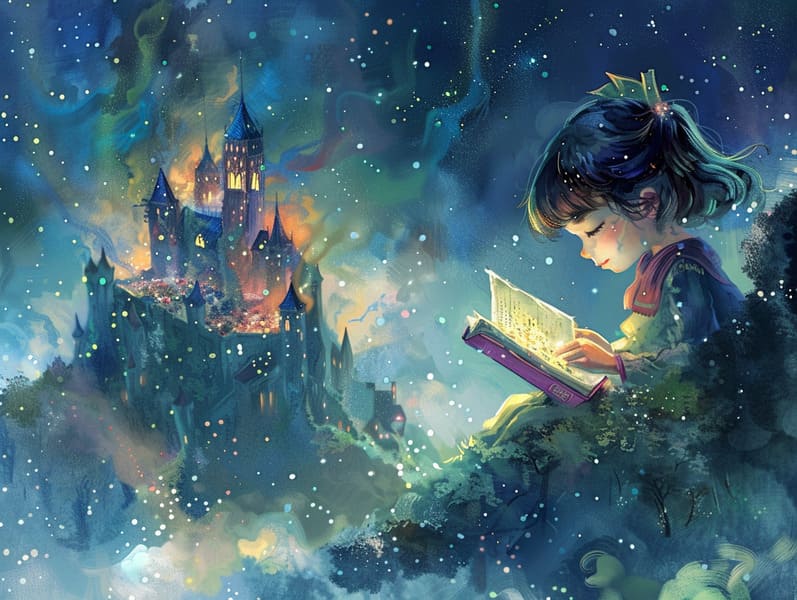The Beginning of Old Fairy Tales with the Unwavering Grandeur.

Short fairy tales have deep roots. These tales have been transmitted from one generation to the next centuries before they were ever put on paper. They developed from a variety of backgrounds, including Asian traditions. They were initially disseminated among mature audiences, often carrying themes and messages concerning the societal norms and beliefs of the time.
The famous Grimm duo, Jacob and Wilhelm Grimm, were among the first to compile and publish many of these beloved tales. Their volume, "Grimm's Fairy Tales," included narratives like "The Little Glass Slipper," "Hansel and Grethel," and "The True Story of Snow White," which have since become classics in the world of beloved fairy tales. Similarly, H. C. Andersen's delightful tales, such as "The Sea Maid," and "The Duckling's Story," have enchanted hearts worldwide, guaranteeing their place in the pantheon of timeless fairy tales.
Despite their historical roots, these tales remain as impactful as ever, especially as children's bedtime stories. These enchanting tales are now available in numerous formats, including gorgeously illustrated books, delightful animations, and online storybooks.
Their ongoing significance can be connected to several fascinating points:
Moral Lessons: Traditional fairy tales often illustrate important moral lessons. Narratives like "The Boy Who Cried Wolf" teach the merit of sincerity, while "The Tortoise and the Hare" emphasize the traits of persistence and humbleness. These tales offer little ones clear distinctions between ethical and unethical, guiding their moral compass in a gentle yet lasting way.
Kindness and Comprehension: Classic fairy tales frequently present personalities facing difficulties and adversities, inciting children to comprehend with their struggles and celebrate their triumphs. For instance, "Beauty and the Beast" shows us the benefit of appreciating inner worth to realize the inner being of a being, strengthening sympathy and knowledge.
Cultural Knowledge: Many traditional fairy tales are deeply ingrained in the cultural contexts from which they emerged. Understanding these narratives can provide captivating looks into different cultures, building a sense of global insight and perception.
Imagination and Innovation: The supernatural elements in fairy tales—talking animals—fire up children’s creative dreams. These stories bring readers to imaginary realms, triggering innovative dreams and a sense of awe that endures a lifetime.
Classic fairy tales are not only captivating but also edifying. They work as fascinating tools in nurturing various brain and heart skills in little ones. When classic fairy tales are narrated, they advance speech development by showing new lexicon and detailed sentence structures. This practice also boosts auditory website perception and attentiveness, as little ones listen intently, expectant to see what happens next.
Furthermore, discussing the themes and characters of old fairy tales can promote critical thinking and analytical skills. Young ones are led to find patterns, foresee events, and understand cause and effect. These discussions also support young ones reveal their thoughts and feelings, strengthening their emotional intelligence.
In today’s online age, the proliferation of free fairy tales online has made these stories more acquirable than ever. Websites and online apps give broad selections of old fairy tales that can be viewed or heard anytime, anywhere. Fairy tales narrated are particularly well-received, offering an delightful method for children to immerse in these magical stories. Voice books and read-aloud videos bring characters and settings to life, often complemented by entrancing harmonies and harmonies that elevate the narrative experience.
The timeless appeal of classic fairy tales lies in their ability to evolve to changing times while sustaining their core values. Contemporary reimaginings of these narratives often include more diverse characters and modern settings, making them familiar to today’s audience. However, the central morals of spirit, empathy, and rightness remain unchanged, continuing to connect with young listeners of all ages.
Timeless fairy tales also offer a sense of calm and knownness. They provide a orderly narrative with a recognizable beginning, middle, and end, often concluding with the conclusion of conflicts and the triumph of rightness over wrongness. This foreseeability can be solacing for the young, providing a sense of sturdiness in an constantly changing world.
Traditional fairy tales continue to entrance and coach new generations, maintaining their appeal and relevance in modern society. As children's night stories, they impart upon a perfect blend of charm and enlightenment, sustaining moral values, empathy, and creativity. The proliferation of digital fairy tales and the prevalence of fairy tales spoken confirm that these classic stories remain accessible to new generations.
By retaining and spreading these fairy tales, we continue to acknowledge the rich tapestry of fables and cultural heritage. Whether you are delving into a vibrantly illustrated book, seeing a web-based library, or listening via an audiobook, the elegance of old fairy tales is always within reach. These narratives remind us of the unending strength of narratives and its ability to link us across generations and cultures.
No matter if you are delving into a richly illustrated book, perusing a online collection, or playing an narrated book, the grace of old fairy tales is always within reach.
These fairy tales show us of the consistent essence of stories and its ability to join us across generations and cultures, forming a connection that captivates and teaches alike.